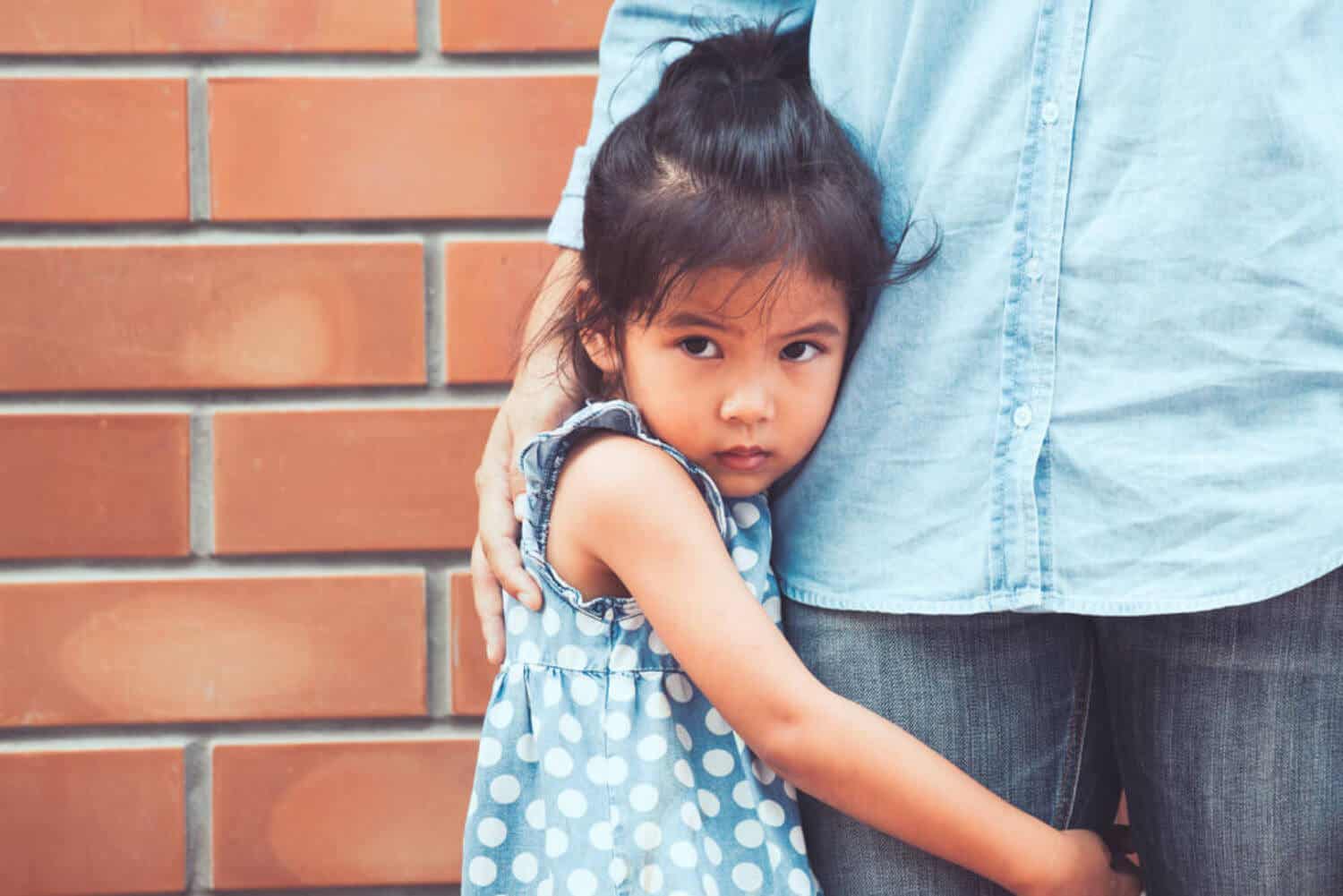Understand Your Children's Fears Without Overprotecting


Written and verified by the psychologist Elena Sanz Martín
Children are discovering the world. For them, everything is new, surprising, and unknown. Therefore, it’s common for them to experience a great number of fears before they fully understand every element of their environment. Adults often contribute, unknowingly and with our best intentions, to increase these fears. So, how can we effectively and respectfully respond? The answer is to understand your children’s fears without overprotecting them.
It’s important to remember that parenting is often a matter of trial and error, as no parent is born knowing everything and no child is the same as the next. In this regard, we must be patient with our children, but also with ourselves. In the end, we’re both learning!
What are the most frequent mistakes we make when it comes to our children’s fears?
When we’re new to the adventure of parenthood, it’s normal to find ourselves feeling lost in many situations. Even if we already have more children, we’re likely to face new challenges that we never had to face before. Still, there are two very common positions we should avoid.

Minimizing childhood fears
This is one of the attitudes that we adults most often adopt in the face of children’s fears. Either because of our inability to put ourselves in their shoes or because of our desire to reassure them, we tend to minimize their feelings. Therefore, it’s common for us to utter phrases such as: “It’s not that bad”, “there’s no need to cry” or “crying is for babies”.
We must try to understand that the storm that seems harmless to us can be frightening for little ones. That an animal or an insect may seem dangerous at first glance. And that everyday activities such as sleeping in the dark or washing their hair can produce fear for different reasons.
Although we may not be able to rationally understand their fears, they exist and are significant to them. Therefore, the first step is always to validate their emotions and reassure them that it’s normal to be afraid sometimes. If we downplay their fears and emotions, they may feel misunderstood, judged, or ridiculed.
If our intention is to relativize or reassure the child, this isn’t a good strategy either. It’ll always be necessary for them to feel understood and validated so that, from there, we can guide them regarding how to deal with their fear.
Overprotecting our children
On the other end of the spectrum are those parents who, observing fear in their children, do everything possible to protect them. So, if the child is afraid of the vacuum cleaner or a dog, then when the child cries, they’ll pick him up, move him away from the feared object, and try to reassure him with phrases such as: “I’m right here, I’ll keep you safe”. Similarly, if the child’s afraid to sleep alone, parents may choose to take them to the double bed to make them feel safe.
All of these actions are motivated by love and the desire to prevent the child from suffering. And, surely, they’ll achieve their goal in the short term and the child will calm down. However, we’ll be preventing them from facing challenges and developing self-confidence. It’s useless to reassure them by saying things like, “mommy and daddy are right here” because, sooner or later, mommy and daddy won’t be able to be by their side.

Understand your children’s fears without overprotecting them
As in many situations associated with raising children, the key is to strike a balance. Neither too much harshness nor too much leniency will be positive. Neither dramatizing nor downplaying children’s fears will bring us closer to the desired results. So, we must keep two rules in mind:
- Treat your child as you’d like to be treated,
- Remember to prepare your child to face the world on their own.
If you remember these precepts, it’ll be easier for you to decide how to act in times of crisis. It’ll come naturally to you to comfort, support, and understand your child because that’s what you yourself would need if you were afraid. At the same time, you’ll be able to offer your child increasing autonomy.
You’ll be able to take them by the hand to the vacuum cleaner so that they can see for themselves that it’s harmless. And you’ll stay by their side while they fall asleep in their own room. Above all, remember that there are no magic formulas and that instinct often shows the way so you can understand your children’s fears without overprotecting them.
Children are discovering the world. For them, everything is new, surprising, and unknown. Therefore, it’s common for them to experience a great number of fears before they fully understand every element of their environment. Adults often contribute, unknowingly and with our best intentions, to increase these fears. So, how can we effectively and respectfully respond? The answer is to understand your children’s fears without overprotecting them.
It’s important to remember that parenting is often a matter of trial and error, as no parent is born knowing everything and no child is the same as the next. In this regard, we must be patient with our children, but also with ourselves. In the end, we’re both learning!
What are the most frequent mistakes we make when it comes to our children’s fears?
When we’re new to the adventure of parenthood, it’s normal to find ourselves feeling lost in many situations. Even if we already have more children, we’re likely to face new challenges that we never had to face before. Still, there are two very common positions we should avoid.

Minimizing childhood fears
This is one of the attitudes that we adults most often adopt in the face of children’s fears. Either because of our inability to put ourselves in their shoes or because of our desire to reassure them, we tend to minimize their feelings. Therefore, it’s common for us to utter phrases such as: “It’s not that bad”, “there’s no need to cry” or “crying is for babies”.
We must try to understand that the storm that seems harmless to us can be frightening for little ones. That an animal or an insect may seem dangerous at first glance. And that everyday activities such as sleeping in the dark or washing their hair can produce fear for different reasons.
Although we may not be able to rationally understand their fears, they exist and are significant to them. Therefore, the first step is always to validate their emotions and reassure them that it’s normal to be afraid sometimes. If we downplay their fears and emotions, they may feel misunderstood, judged, or ridiculed.
If our intention is to relativize or reassure the child, this isn’t a good strategy either. It’ll always be necessary for them to feel understood and validated so that, from there, we can guide them regarding how to deal with their fear.
Overprotecting our children
On the other end of the spectrum are those parents who, observing fear in their children, do everything possible to protect them. So, if the child is afraid of the vacuum cleaner or a dog, then when the child cries, they’ll pick him up, move him away from the feared object, and try to reassure him with phrases such as: “I’m right here, I’ll keep you safe”. Similarly, if the child’s afraid to sleep alone, parents may choose to take them to the double bed to make them feel safe.
All of these actions are motivated by love and the desire to prevent the child from suffering. And, surely, they’ll achieve their goal in the short term and the child will calm down. However, we’ll be preventing them from facing challenges and developing self-confidence. It’s useless to reassure them by saying things like, “mommy and daddy are right here” because, sooner or later, mommy and daddy won’t be able to be by their side.

Understand your children’s fears without overprotecting them
As in many situations associated with raising children, the key is to strike a balance. Neither too much harshness nor too much leniency will be positive. Neither dramatizing nor downplaying children’s fears will bring us closer to the desired results. So, we must keep two rules in mind:
- Treat your child as you’d like to be treated,
- Remember to prepare your child to face the world on their own.
If you remember these precepts, it’ll be easier for you to decide how to act in times of crisis. It’ll come naturally to you to comfort, support, and understand your child because that’s what you yourself would need if you were afraid. At the same time, you’ll be able to offer your child increasing autonomy.
You’ll be able to take them by the hand to the vacuum cleaner so that they can see for themselves that it’s harmless. And you’ll stay by their side while they fall asleep in their own room. Above all, remember that there are no magic formulas and that instinct often shows the way so you can understand your children’s fears without overprotecting them.
All cited sources were thoroughly reviewed by our team to ensure their quality, reliability, currency, and validity. The bibliography of this article was considered reliable and of academic or scientific accuracy.
- García, C. Las emociones en los niños.
- Pacheco Ortiz, F. N. (2013). La sobreprotección infantil y su incidencia en el desarrollo emocional de los niños de 3 a 4 años de edad de educación inicial del centro de desarrollo infantil “mi casita de campo” del canton ambato provincia de tungurahua (Bachelor’s thesis).
This text is provided for informational purposes only and does not replace consultation with a professional. If in doubt, consult your specialist.








